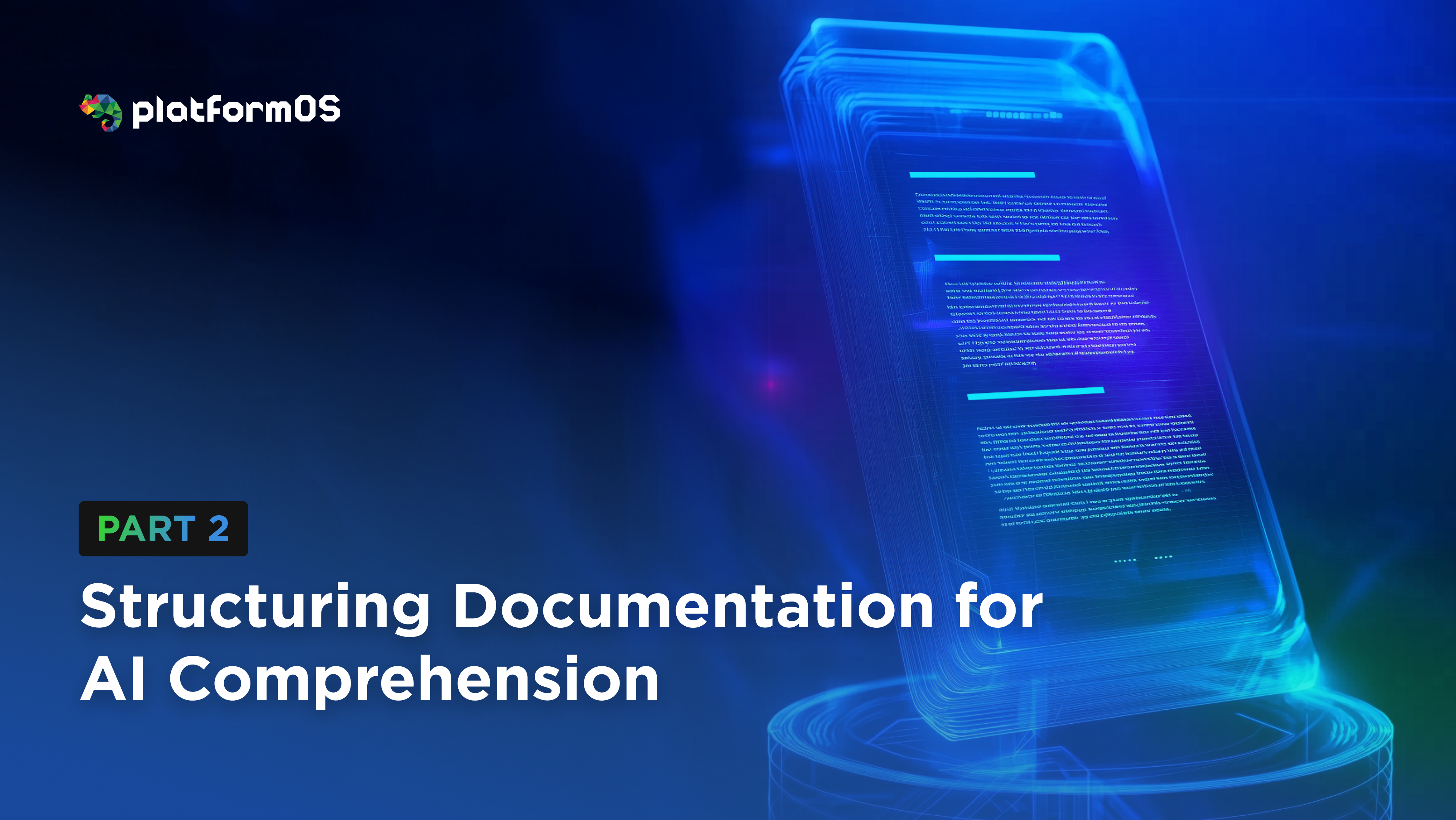





This article is part of our series on how documentation is evolving to serve both human readers and AI systems like search, chatbots, and LLMs.
Series overview:
Writing for Humans and Machines: Why Docs Now Serve Two Audiences
Structuring Documentation for AI Comprehension (you’re here)
From Consumer to Collaborator: How AI Supports Documentation Teams (coming soon)
10 Ways to Make Your Docs AI-Friendly (coming soon)
In our first article, we looked at how documentation is now written for two audiences: humans and machines. As AI tools like chatbots, LLMs, and semantic search engines become more common, structure now determines whether your documentation can take full advantage of AI tools and new technologies.
Humans can skim and understand the context. Machines need signals. And structure is one of the clearest signals you can give them. AI systems do not absorb documentation like people do. Instead of scanning visually or using intuition, they rely on patterns in text, the hierarchy of headings, and how content is grouped. Models process information in chunks, and if content is long or inconsistent, they can miss the point or even invent details. This makes good structure essential for AI comprehension. Unstructured documents with too many topics on one page or unclear sections are difficult for both readers and machines to interpret. They also increase the risk of hallucinations or irrelevant answers when the content is used by AI tools. Well-structured documentation is clear, consistent, and broken into logical pieces. Here are key practices that make content easier to understand and easier to parse: Use clear, descriptive headings Headings are more than just visual breaks. They help define the topic and set context. Avoid generic headings like “Introduction” or “Additional Info.” Instead, use specific titles like “Set Up Your First API Call” or “Troubleshooting Authentication Errors.” Chunk large content into focused sections Long pages that cover multiple topics can confuse users and overwhelm LLMs. It is better to split them into smaller, self-contained topics that answer one key question or solve one task. This also allows more precise linking and reuse. Use semantic markup Format your content clearly. Use numbered lists for steps, tables for comparisons, and code blocks for code. This formatting helps both readers and machines identify the role of each element and respond to it appropriately. Create strong internal links Link related content in a meaningful way. A well-linked documentation site helps LLMs build a mental map of your product or API. It also helps users move smoothly through a learning path or troubleshooting process. These techniques improve usability, reduce confusion, and make the content easier to maintain. Several recent articles support these practices with examples and case studies: Kapa.ai recommends short, focused pages with clear titles and consistent layout. Their insights are based on how LLMs like OpenAI’s models interact with real-world docs. Document360 suggests including glossaries and FAQ pages, which help AI tools interpret terminology and user intent. Fabrizio Ferri Benedetti on Passo.uno explains how semantic structure, labeling, and clean formatting support machine comprehension without compromising readability. The article Making Your Documentation AI-Friendly introduces llms.txt, a proposed file that tells AI tools which parts of your site are relevant. This is similar to how robots.txt works for search engines. All of these sources emphasize the same thing: structure plays a vital role in how effectively documentation is understood and used. At platformOS, we’ve made structured authoring a core part of our documentation approach. With DocsKit, we support modular, topic-based documentation using predefined content types inspired by DITA principles such as task, concept, reference, and others. This approach makes it easier to break down complex systems into manageable, well-scoped content units. We also provide clear guidelines for how to use structural elements like headings, lists, tables, and code blocks consistently across content. These are documented in our internal style guide and reinforced through templates for each content type, helping authors write with both clarity and consistency in mind for human readers and AI systems alike. For example, when we worked on the new documentation site for Washington D.C. Department of Buildings, we focused on clarity, consistency, and reusability. Each document serves a specific purpose, and the overall structure helps guide users and support AI-powered solutions. We also use tools like EkLine, which analyzes writing style and structure to catch issues early. These workflows help ensure our documentation is ready to support both readers and AI tools from the start. Here are five simple tips to make your docs more AI-comprehension friendly: Use specific, meaningful headings that reflect the content. Break long content into smaller, well-defined pages or sections. Format content semantically: use lists, code blocks, and tables properly. Avoid combining multiple topics in one document. Use internal linking to create relationships between topics. These improvements benefit users and help LLMs provide accurate and relevant responses. In the next article, we’ll explore how AI is not just reading our docs but helping us create and refine them. We’ll share examples of how AI-augmented workflows support writing teams and improve content quality.How AI “reads” documentation
Core structural techniques that help
What the community recommends
How we apply structure in our work
Takeaway tips: Structure that supports AI
Up next
Ensure your project’s success with the power of platformOS.